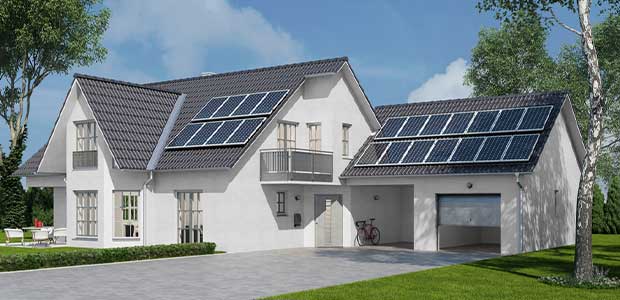
Environmental Impacts of Building a New Home
There are choices you can make to help your construction be more sustainable.
- By James Ritter
- Sep 09, 2022
We all deserve to have somewhere nice to live. And if that means building a new home, you have every right to begin the process and craft a house you can call your own. But just how much of an impact is that going to have on the world around us?
There’s lots to take into account during the construction process. Today, we’ll assess some of the biggest effects it will have on the environment, as well as proposing ways to make your choices more sustainable.
Greenhouse Gas Emissions
Twenty-five percent of all UK greenhouse gas emissions are a byproduct of construction. It’s no secret that manufacturing can have a big impact on the environment. The mass output of energy from heat, light and the burning of fossil fuels contributes to huge amounts of CO2 being produced every time a house is built.
In fact, figures go as far as to show that a mind-boggling 50 tons of carbon gas is generated for every average home built in the UK. The bulk of this (close to 20 tons) comes from the manufacturing of steel alone.
Use of limited and precious resources
A lot of resources we took for granted 50 years ago aren’t as infinite as we might have once believed. Oil, coal, phosphorus, natural gases and even water are all resources which are at risk of being depleted if we continue to use them with relative abandon.
Unfortunately, a lot of these have become the go-to product of choice in construction projects. And while there’s an ongoing desire to move away from this, the progress is slow.
Transportation of materials and workers
While it’s less visibly obvious during construction, the movement of raw materials, secondary resources and even your workforce will all contribute to the overall production of CO2 and other harmful emissions.
Transportation is not a factor we usually consider beyond the impact of cars on highways and motorways, but it can be really influential in the overall sustainability of a project. The same report which highlighted that 25 percent of greenhouse emissions are caused by buildings and infrastructure, would go on to suggest that figure would rise to 42 percent if surface transport was also factored in.
Ways to be more eco-friendly and sustainable
Fortunately, there are plenty of ways to adopt a more sustainable approach to your next home build. Here are just some of the best ways make it as green as possible:
- Heating – Consider using heat pumps. These are a new way to spread warmth through your home using a thermal energy system.
- Solar energy – The use of solar panels isn’t the niche addition to a home it once was. Try to incorporate these as much as possible into any designs.
- Insulation – Use as much natural material for insulation as possible. That means stuff like sheep’s wool, cotton, or even cork.
Make sure to always adopt a sustainable approach when thinking about building your own home.
About the Author
James Ritter is a digital consultant with a particular interest in sustainability and has advocated for content focussing on both local and global environmental issues. James majored in creative writing at university and is always eager to expand his knowledge around different subjects.